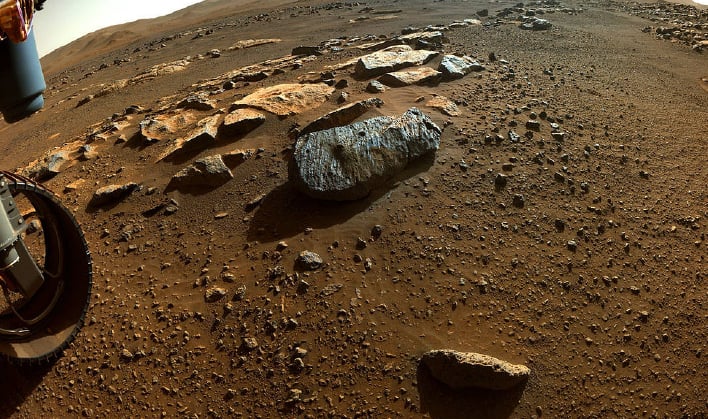Mars Rover Discovers An Ultra-Rare Martian Mineral Spewed From Volcanic Eruptions

NASA continues to study the surface of Mars ahead of future manned missions to the Red Planet. The idea is to find the ideal location for humans to land, one with high scientific value that would also provide resources needed for human exploration. During the exploration of the Red Planet, one discovery had researchers puzzled since the Mars Curiosity rover made the rare find. Now planetary scientists from Rice University believe they may have solved the mystery.
Tridymite is a high-temperature, low-pressure form of quartz. The Mars Curiosity rover found the rare mineral in Gale Crater, the location of where the rover first landed. The location was chosen due to the high probability that it once held liquid water, and was later confirmed to have been a lake as early as 1 billion years ago.
The discovery of tridymite is one of the most surprising finds in the 10 years of exploring the planet, according to Rice's Kirsten Siebach, co-author of a study published online in Earth and Planetary Science Letters. She remarked, "Tridymite is usually associated with quartz-forming, explosive, evolved volcanic systems on Earth, but we found it in the bottom of an ancient lake on Mars, where most of the volcanoes are very primitive."

The conclusion was that Martian magma sat for a longer period of time than usual in a chamber below a volcano. It then underwent a process of partial cooling called fractional crystallization until extra silicon was available. Then in an enormous eruption, the volcano ejected ash containing the extra silicon in the form of tridymite into the Gale Crater lake and surrounding rivers. Once there, water helped to break down the ash through chemical weathering.
This newly proposed scenario is thought to be consistent with the 2016 find. It would have led to the concentration of tridymite, and thus the existence of minerals consistent with that found by Curiosity. It would also help to explain other geochemical evidence found by the Mars rover detected in the sample, which included opaline silicates and reduced concentrations of aluminum oxide.
Siebach explained, "It's actually a straightforward evolution of other volcanic rocks we found in the crater. We argue that because we only saw this mineral once, and it was highly concentrated in a single layer, the volcano probably erupted at the same time the lake was there."
The new research would suggest that the volcanic eruption occurred when Gale Crater was a lake, which would also mean it happened more than 3 billion years ago. This was during the time Mars was transitioning from a planet with lakes and rivers, to the one we now know today that is void of water.
If you are wanting to read more on the research by Rice University and the latest theory as to how tridymite ended up in the Gale Crater, you can do so by visiting ScienceDirect.
Top Image Credit: NASA

